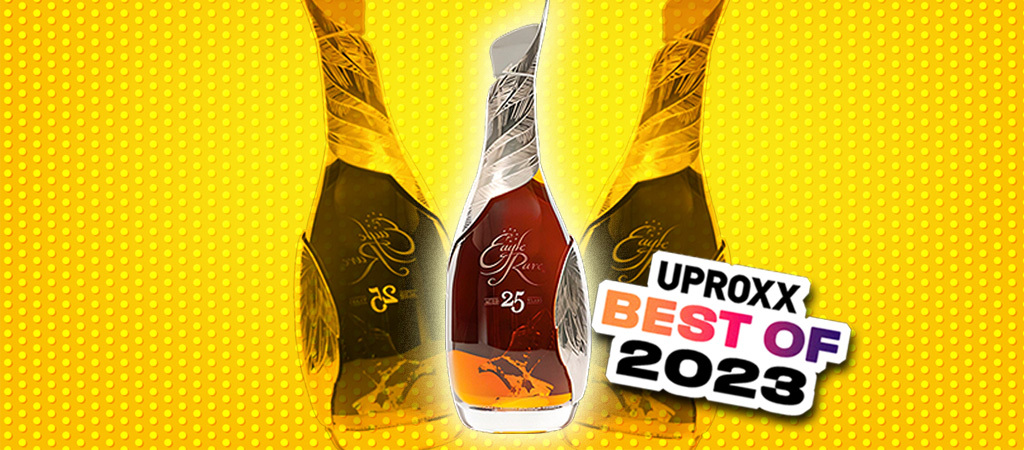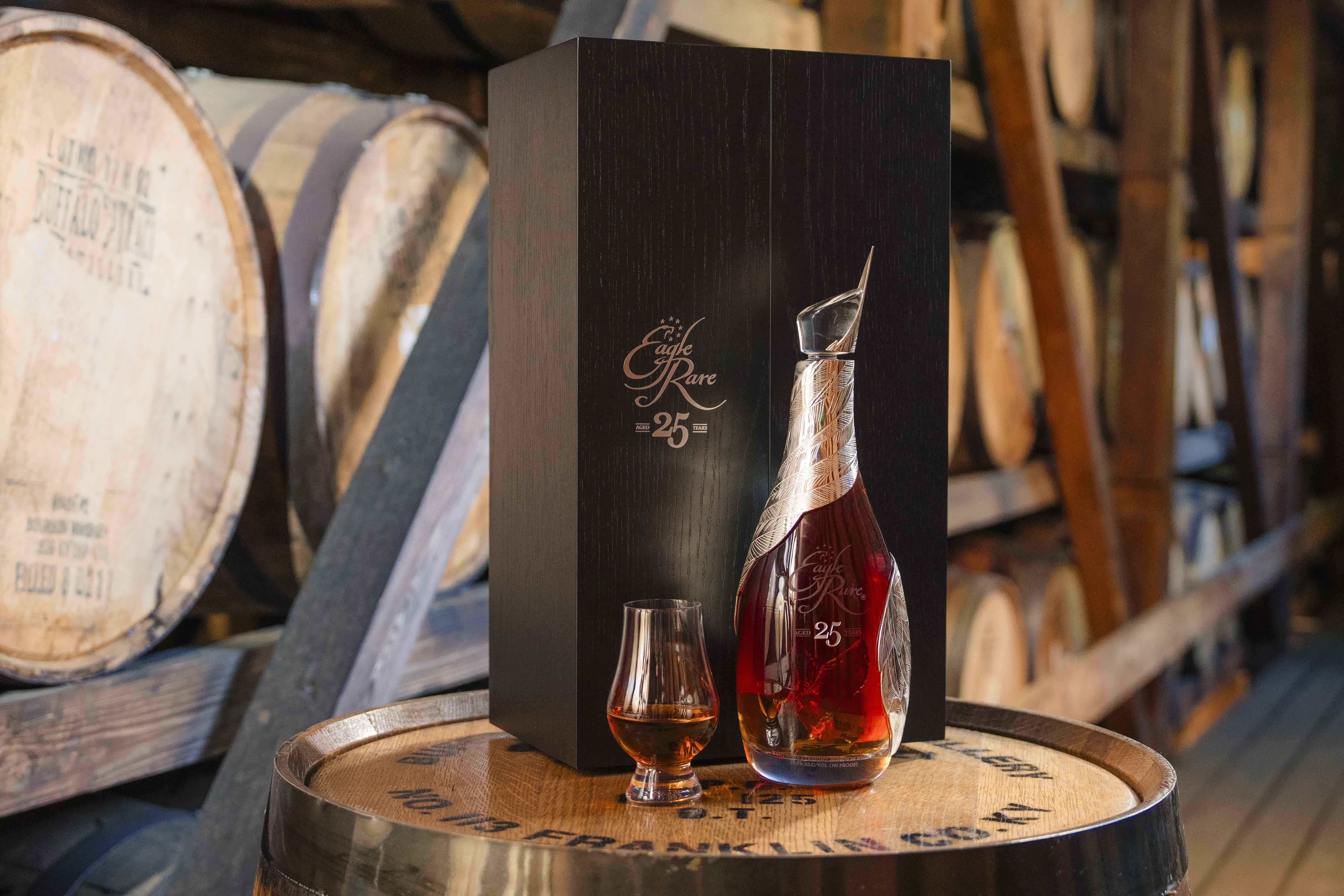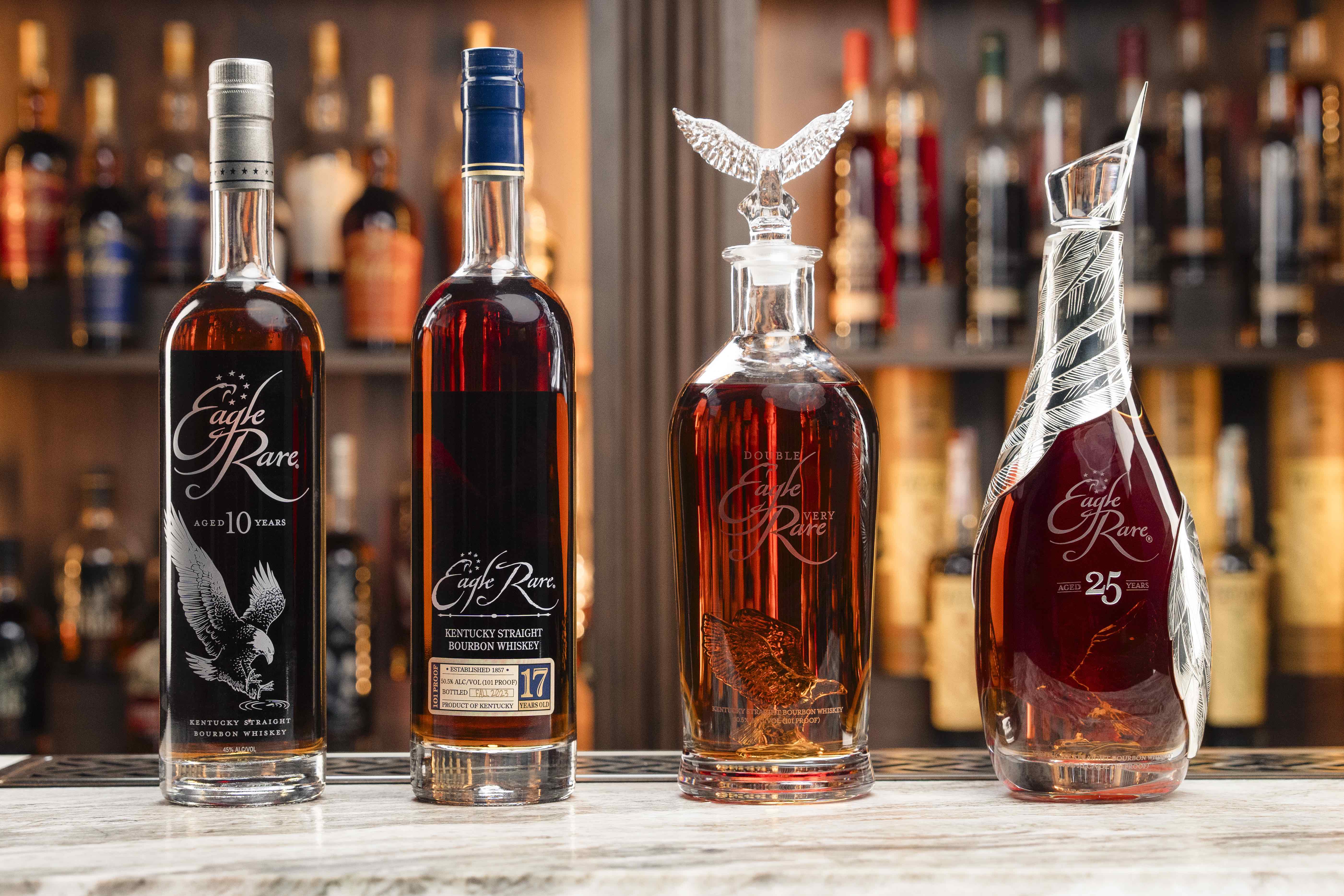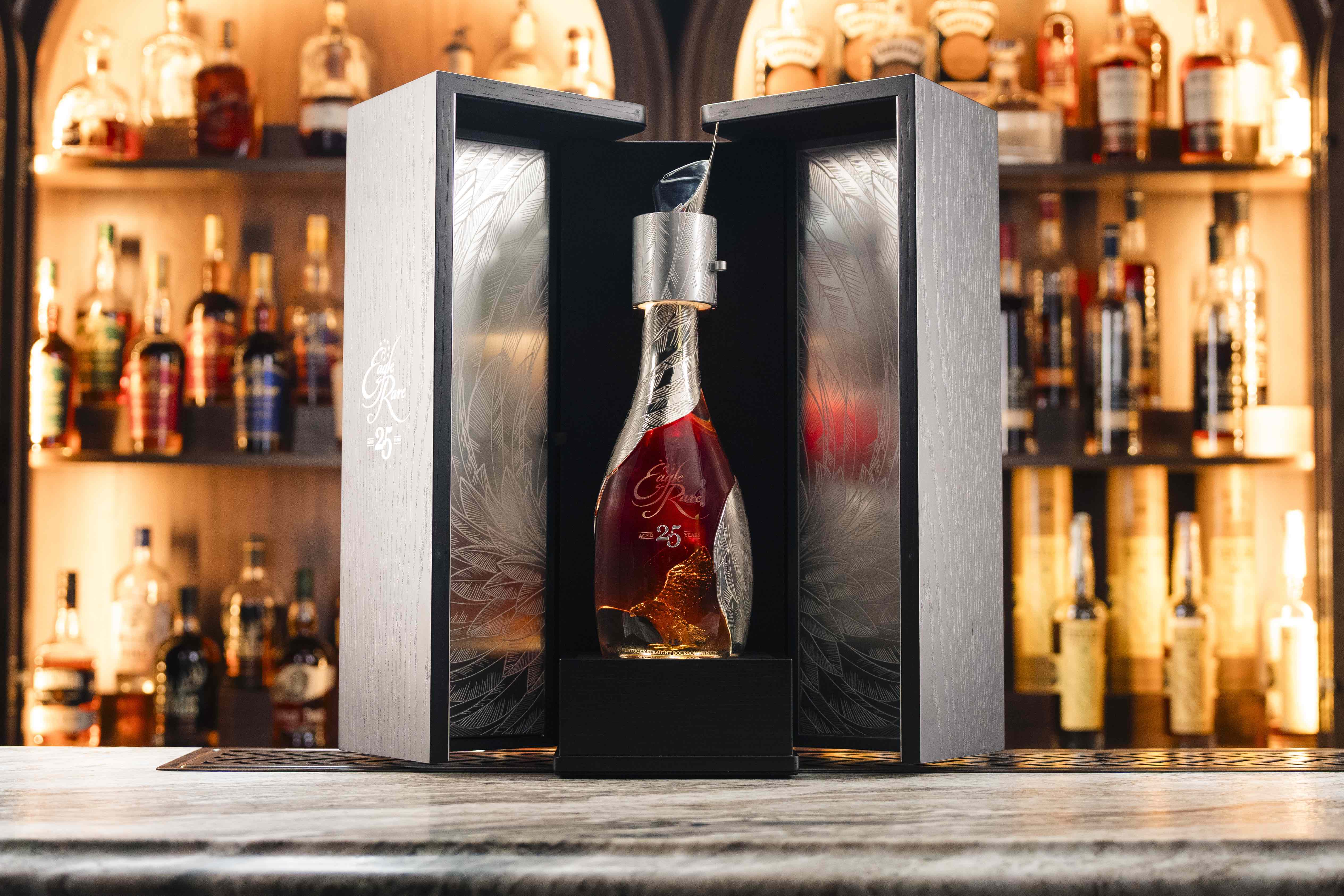
The end of the year is loaded with “best of lists,” for obvious reasons. But even with big lists dropping left and right, it’s worth taking a moment to focus on the superlatives. While we picked 100 bottles of bourbon to highlight this year, there was one that truly stood above the rest — Eagle Rare 25.
Eagle Rare 25 is a Kentucky straight bourbon whiskey made at the iconic Buffalo Trace Distillery in Frankfort, Kentucky. That alone will get most people excited, as Buffalo Trace is behind some of the world’s most beloved and sought-after whiskeys — from the Pappy Van Winkle line to Blanton’s and Weller to E.H. Taylor. But the “best of the year” is about more than just hype and seeking beloved brand drops. It’s about transcending time and place while offering something unique. A game changer. And that’s what the team at Buffalo Trace was able to achieve with our pick for 2023’s best bourbon.
In creating something truly magnificent, there are a lot of facets at play. Yes, it has to taste astoundingly good. But it also has to open new doors while still holding onto something familiar and perhaps comforting. It’s a hell of a balancing act. That becomes even more strained the longer a whiskey ages. Kentucky has a varied climate with cold winters, mild springs and falls (for the most part), and hot and humid summers. That variance makes long aging a rarity. When looking at aging bourbon, seasons become more important than years. It’s really more about the maturity of the whiskey than the number on a bottle.
“The whiskey changes and develops over time due to a variety of factors, including oak, barrel char, temperature, humidity, light, and more,” Harlan Wheatley, Master Distiller at Buffalo Trace, notes. “Age often contributes to creating a mature spirit, but many factors work together to create an outstanding tasting experience.”

This deeper understanding of aging an American whiskey is what makes Eagle Rare 25 so special. Eagle Rare 25 wasn’t just left to sit in a barrelhouse like any other barrel of bourbon at Buffalo Trace. Through the experimentation happening at Warehouse X at Buffalo Trace, Wheatley and his team have been monitoring how whiskey is aged and affected by atmospheric pressure, humidity, temperature, light, and even the airflow in a warehouse. They’ve been gathering millions of scientific data points for years now and have been able to apply what they’re learning to a new format in Warehouse P, where Eagle Rare 25 was aged.
I’ll let Wheatley take it from here: “Warehouse P allows us to maintain our commitment to age as a critical element to producing premium whiskey, while also accounting for the realities of our physical location and the impact the environment has on our ability to age barrels over an extended timeframe, gracefully.”
All of this sounds great (albeit very “in the weeds”). But here’s the long and short of it, Eagle Rare 25 was an experiment that went beyond the “science” and hit the mark of something closer to magic. As the barrel aged in Warehouse P, it started to change in ways that weren’t expected. It’s almost as if the whiskey started doubling back on itself flavor-wise. The hefty oakiness that it had at 20 years old, matured away and revealed a softer whiskey, full of notes that weren’t as readily apparent before.
It wasn’t that it tasted like it was 12 or 15 years old again. It was more like it tasted like something completely new. Something fresh.
As Wheatley puts it, “While we developed predicting formulas on what to expect from our whiskies based on the changes in the environment, this whiskey took us somewhere new as it aged in Warehouse P.”

So what does this whiskey taste like? I have the answer for you. I was lucky enough to taste this with Wheatley in Warehouse P when it was ready and again for this article to confirm my original tasting notes:
The nose hints at old oak staves resting in a musty warehouse — much like Double Eagle Rare (a 20-year-old product) — before veering toward stewed cherries with hints of clove and nutmeg next to salted dark chocolate shavings and rich powdered sugar icing cut with bourbon vanilla and light pipe tobacco essences with a whisper of fall leaves and orchard barks. Taking a step back, the nose is like looking over a banquet table full of Black Forest cakes in an old brick barrel house with dirt from the floor, musty old bricks, and aged beams adding to the sweet and lush desserts. Then imagine the windows are open and the falling leaves and cool air are just sneaking into that experience.
The first sip reveals rich vanilla that gets buttery and creamy with an almost eggnog vibe thanks to the spice with dried cranberry, brandy-soaked cherry, and dried figs leading to rich toffee rolled in dark chocolate and anise before getting cut with a touch of earthy tobacco pulled from fresh black dirt.
The finish hugs you gently, with warmth tied to winter spice barks soaked in apple cider cut with black cherry as the dirt takes on a warehouse must with gently sweet oak staves mingling with a whisper of whole black pepper and clove buds over creamy dark orange spice cake. Basically, you’re diving into those spiced cakes while the barrelhouse continues to layer into the overall profile.
What’s magical about this pour is that the oakiness is there but so subtly drawn back that you’d have a hard time guessing this was 25 years old (ancient, in Kentucky bourbon terms).

All of this adds up to something truly superlative in bourbon. And yes, of course, it’s also pricy — this bourbon is $10,000 at MSRP and twice that at retail. But there are clear reasons. One, this is well-made whiskey that’s amazingly rare — only about 200 bottles exist. Two, it’s something truly delicious. And three, this whiskey is a doorway to a new world of aging whiskey in Kentucky (and the U.S.) for longer periods, which might be a whole new world of flavor profiles we’ve not seen in a very long time at high-age statements.
Wheatley won’t rest on his laurels simply because he hit it out of the park with Eagle Rare 25, either. He pointed out while we were sipping that they’ve “planned experiments over a 20-year timeframe to identify ideal environmental conditions” for their whiskeys and that they’re only “about seven years into the process”.
Eagle Rare 25 isn’t only the fruit of true craftsmanship and experimentation, but it’s the beginning of something game-changing. Or as Wheatley put it, “I firmly believe the whiskey category is only bound by the ideas we have not considered yet.”
That, folks, is very exciting. And we’re proud to name this expression our Bourbon Whiskey of the Year.
